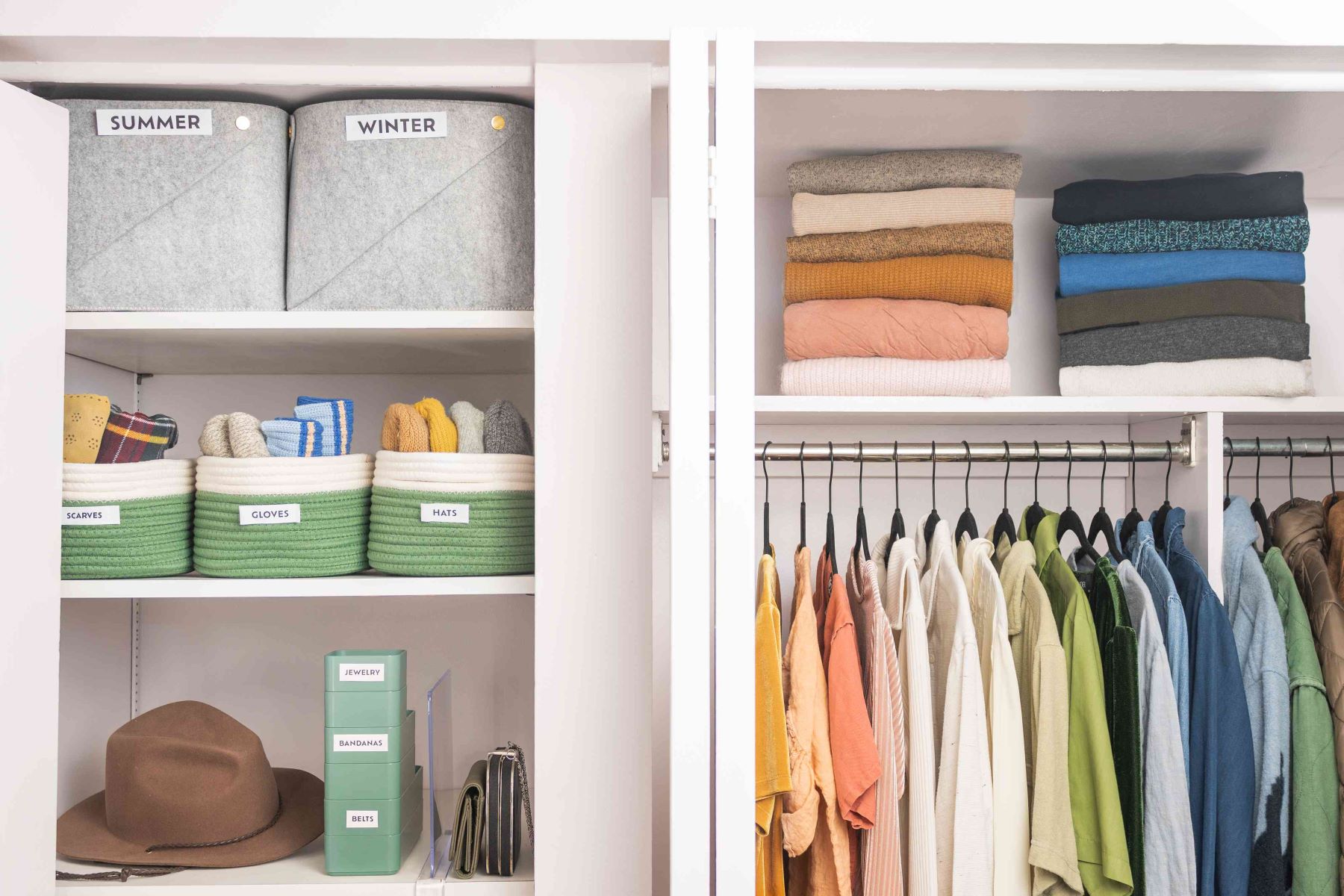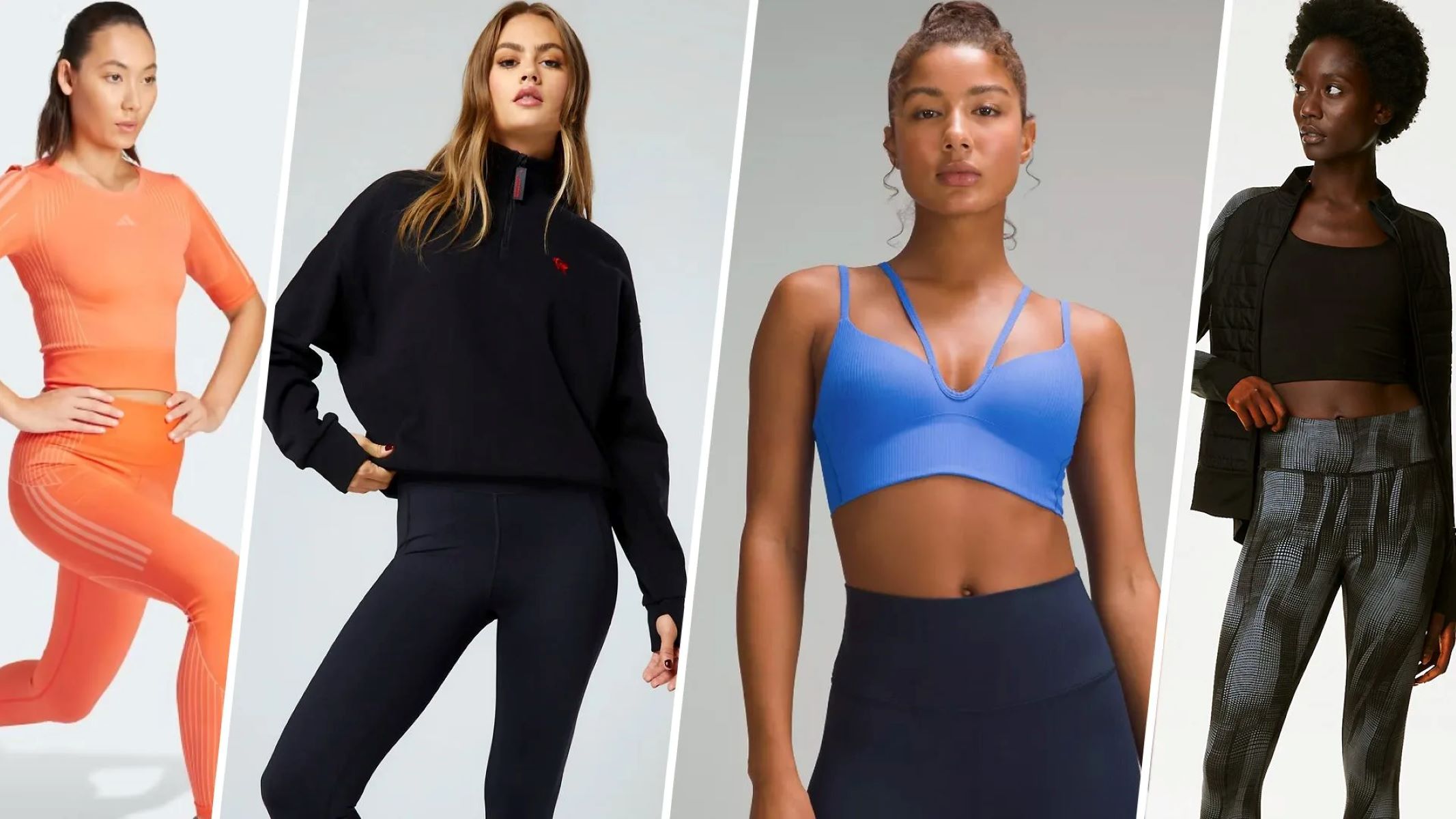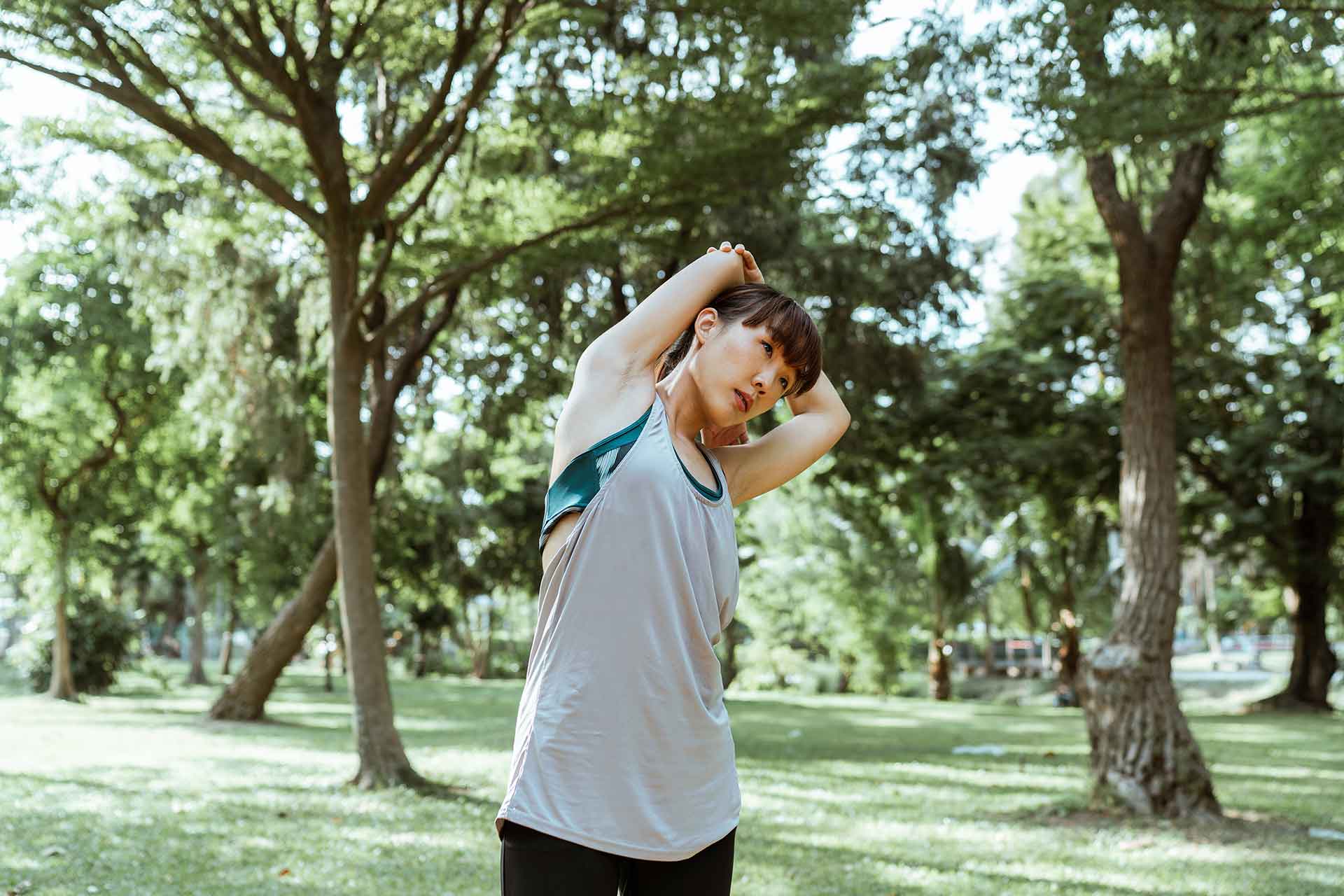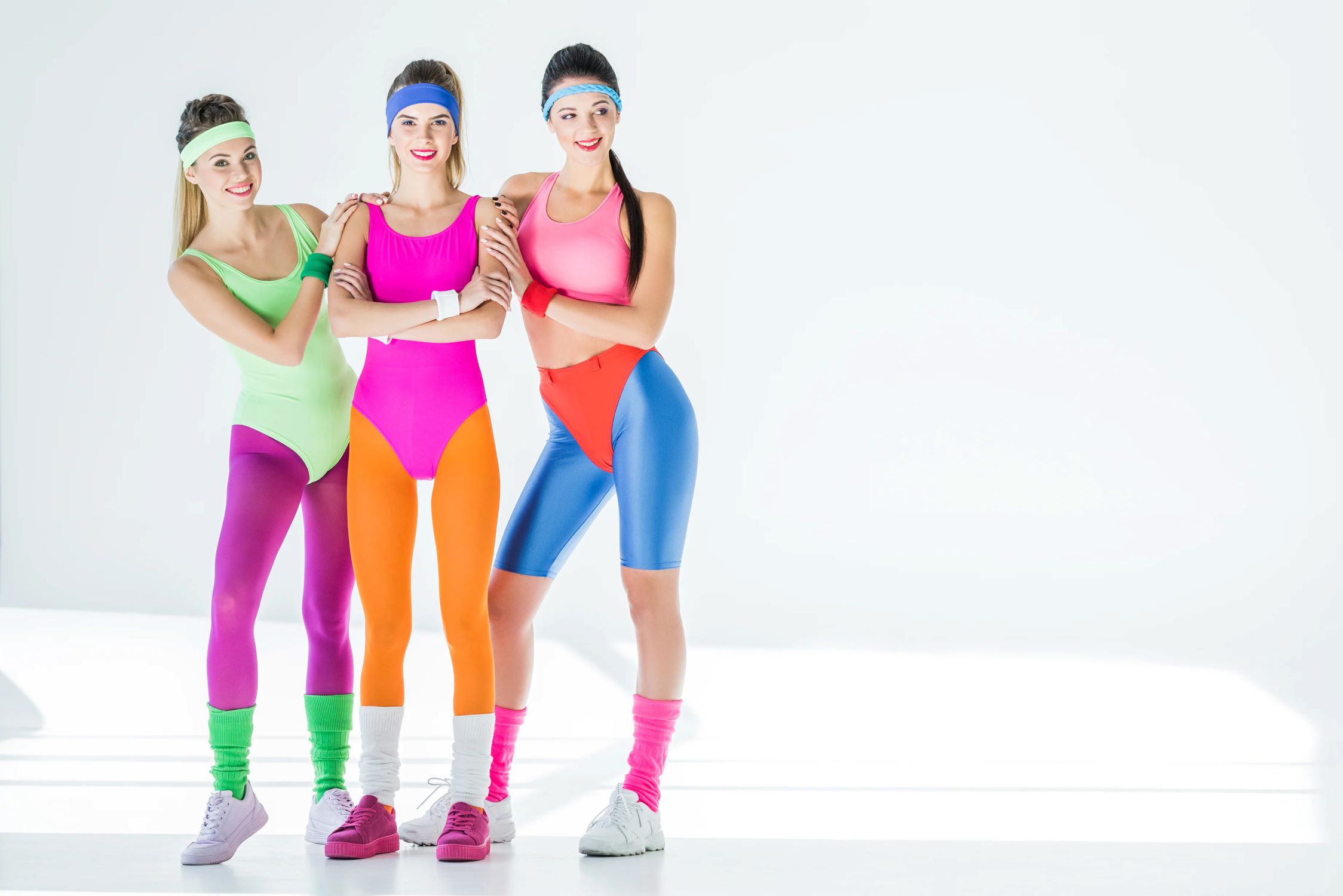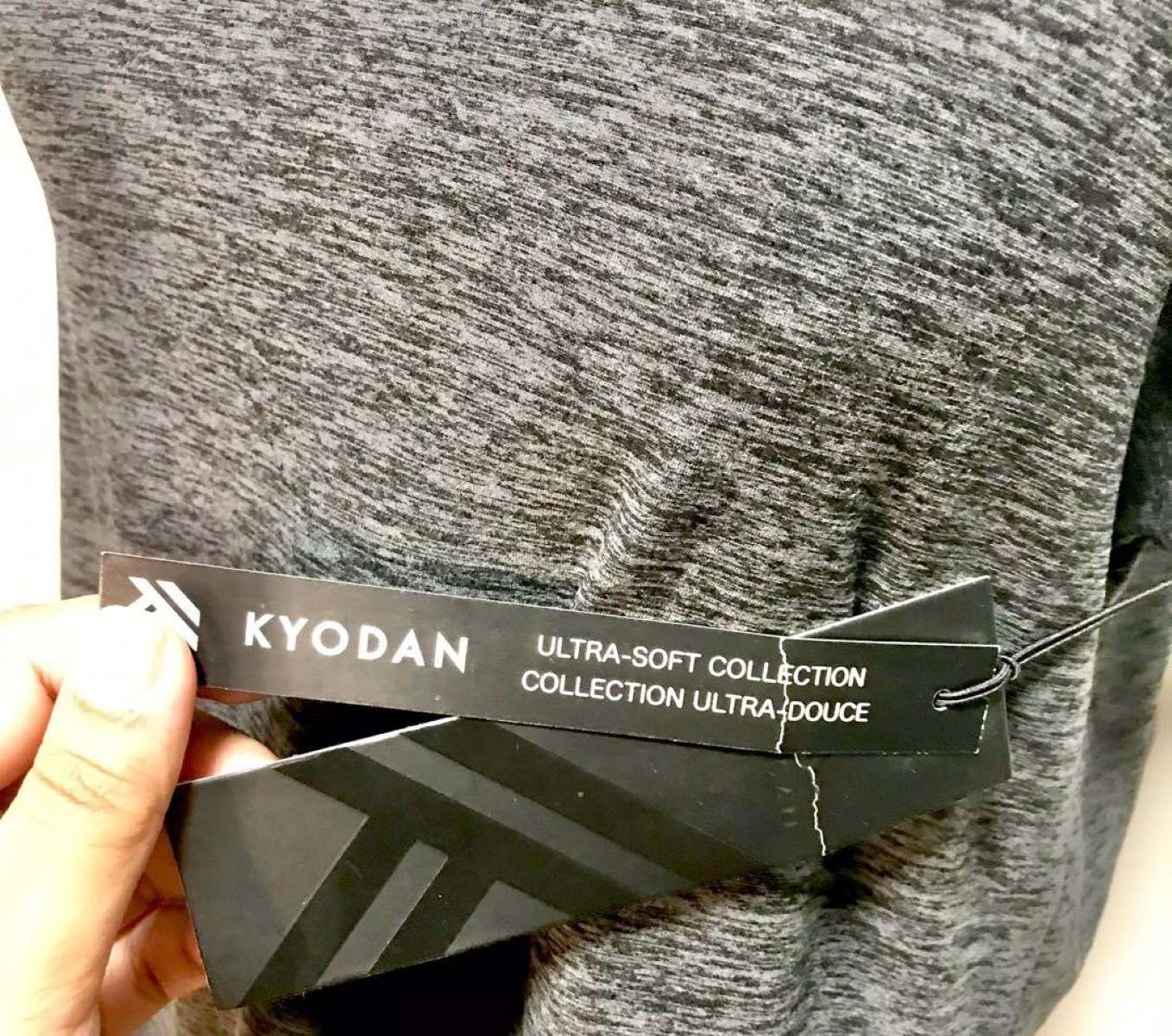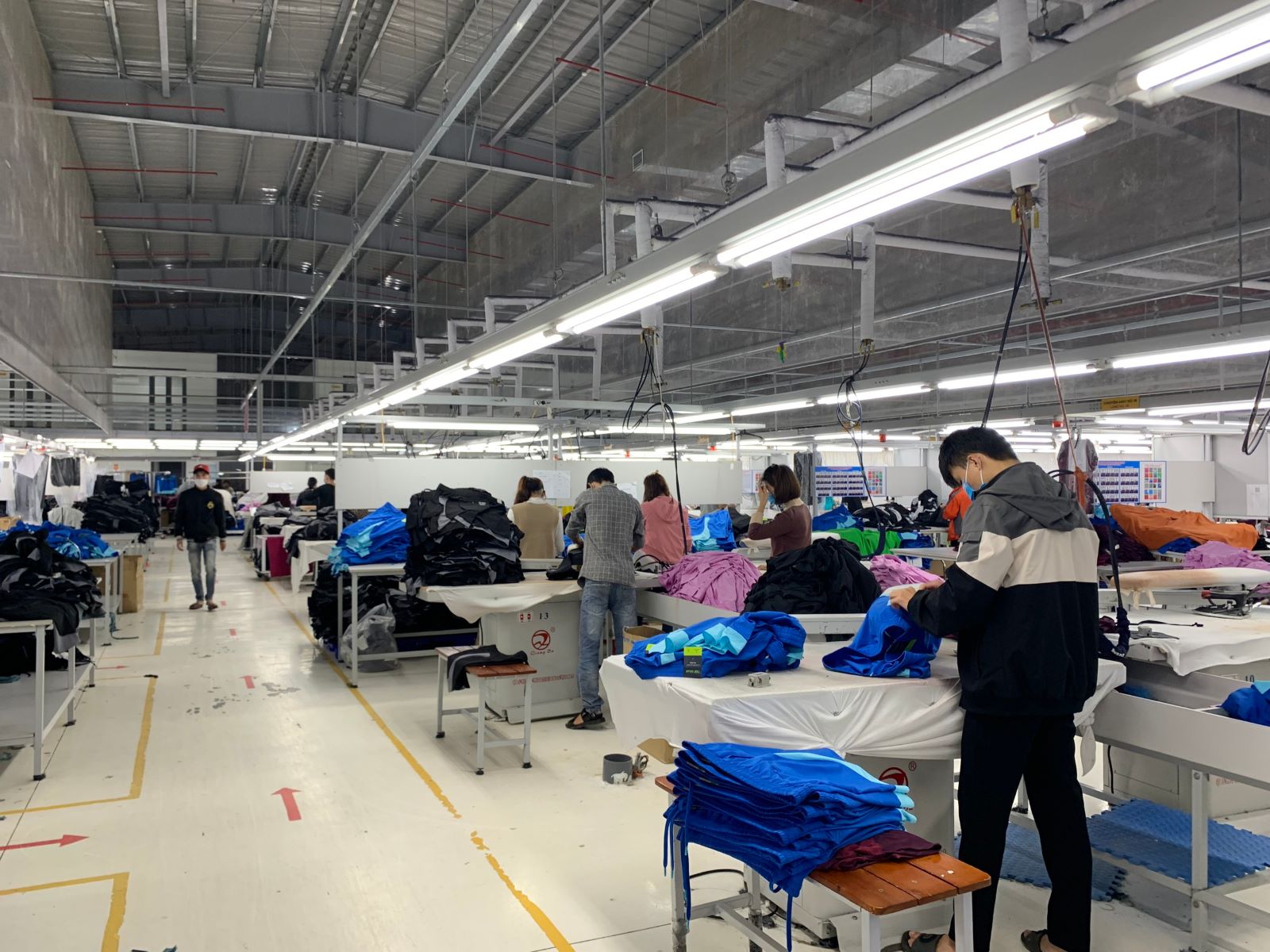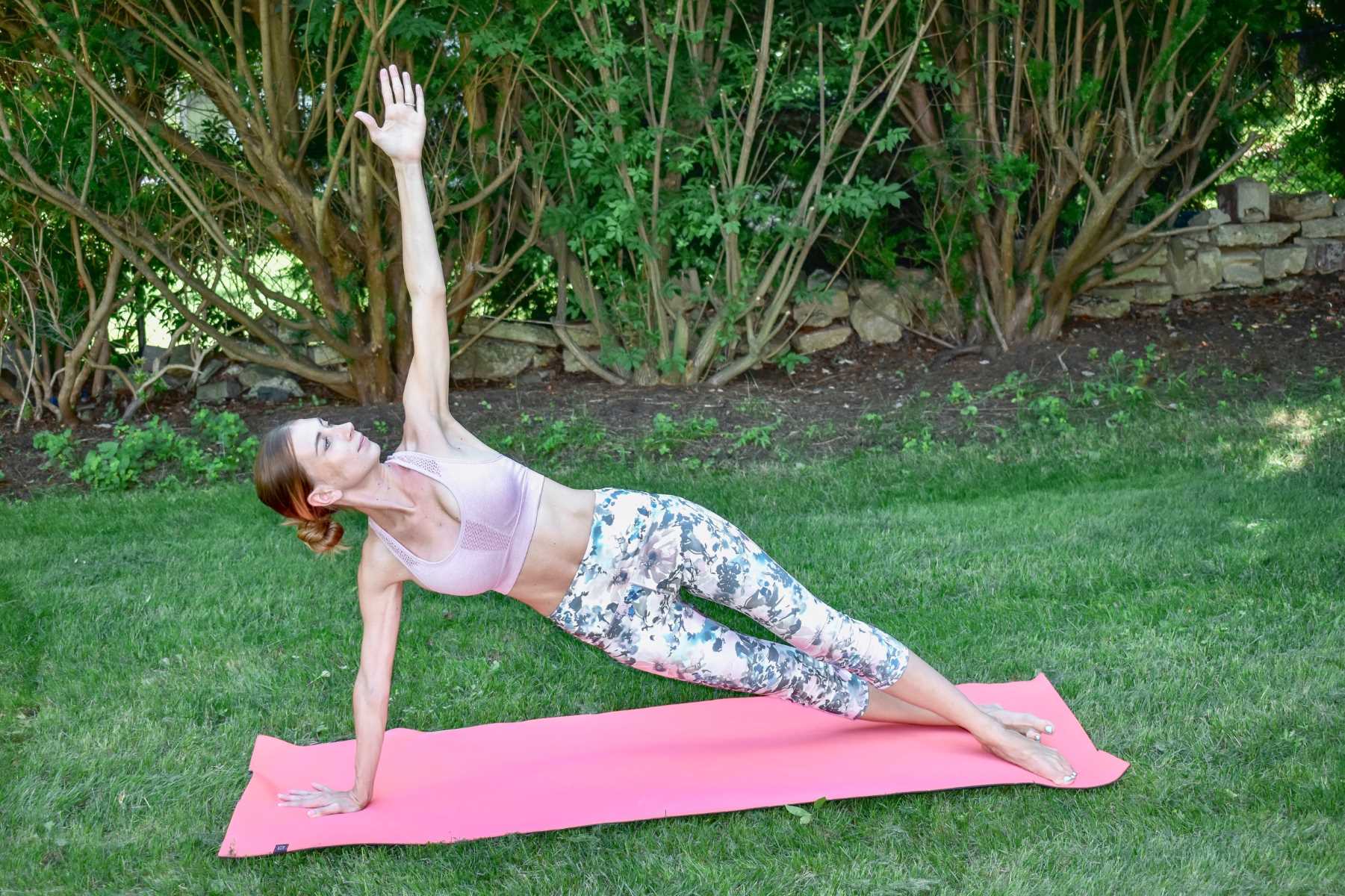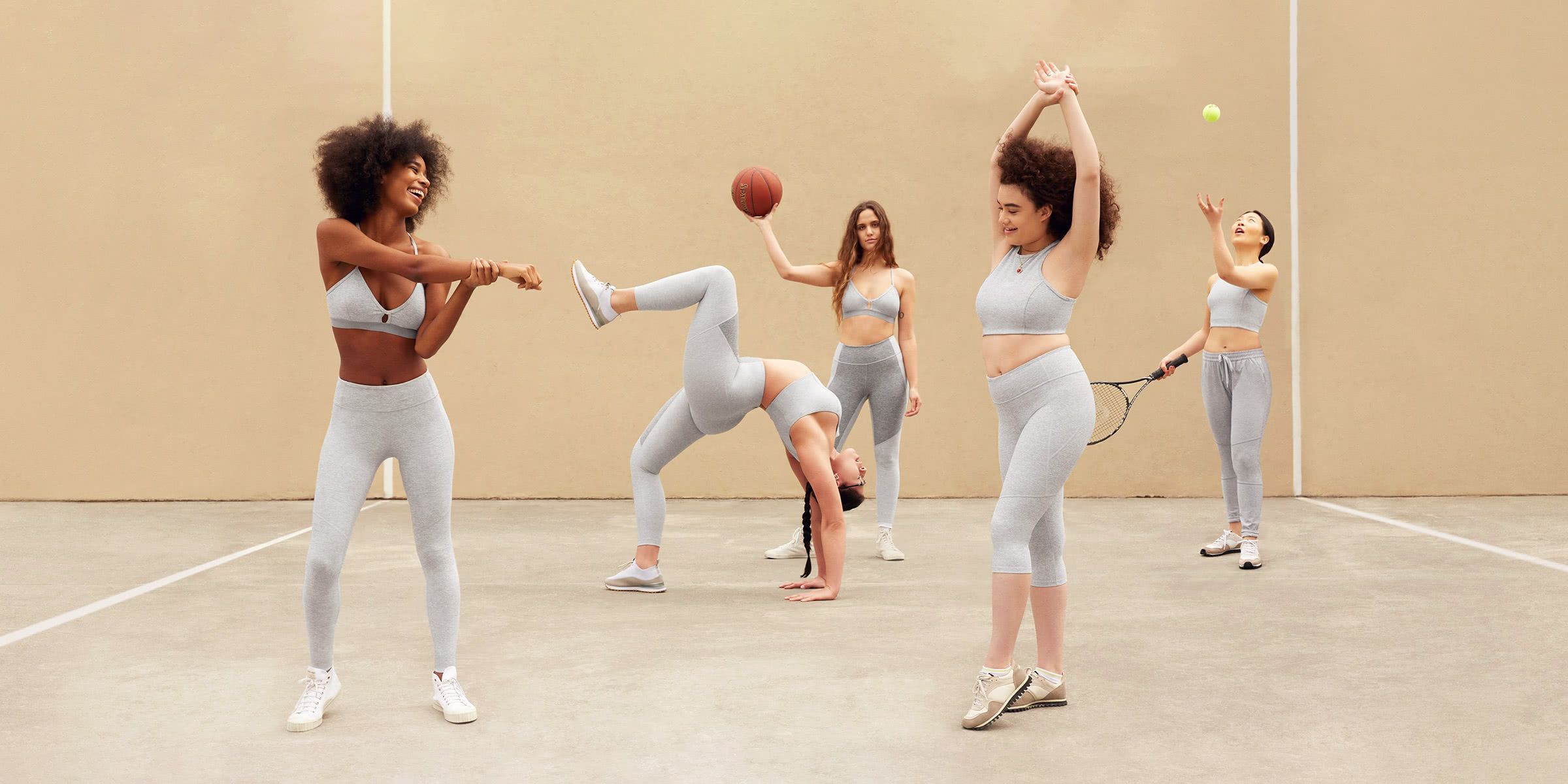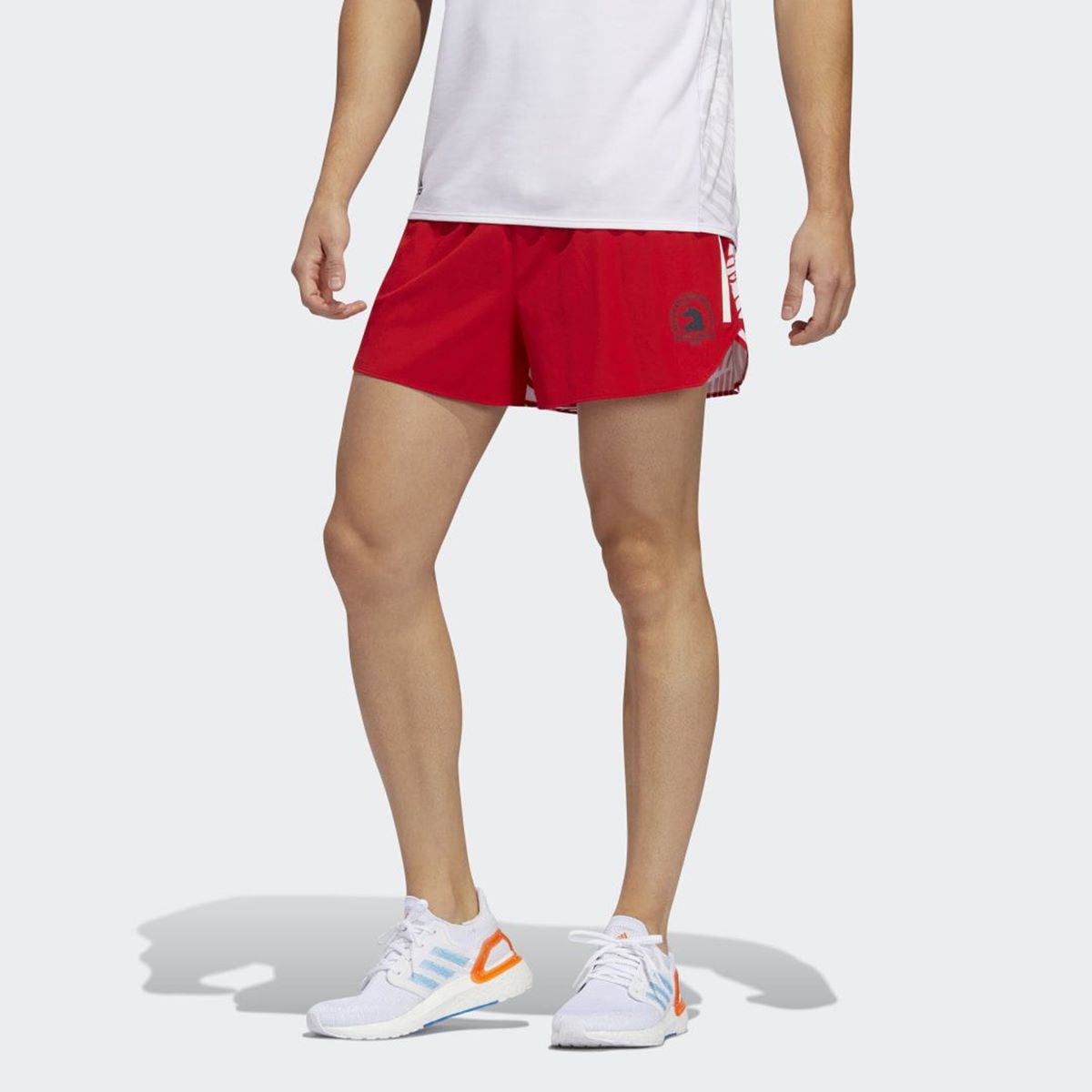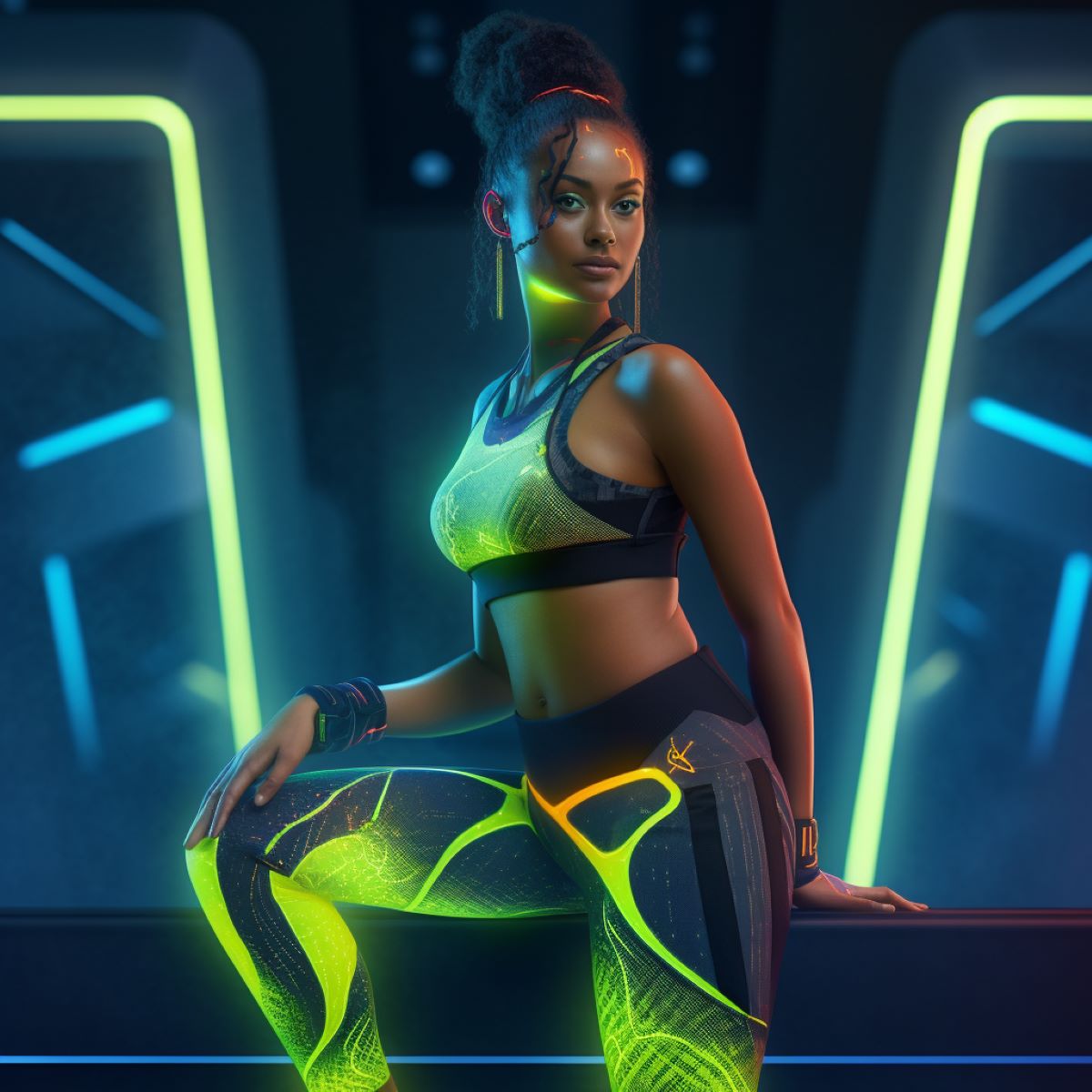

Featured
How Do You Design Activewear
Published: October 12, 2023
Discover how to design featured activewear that combines style and functionality. Get expert tips on creating trendy and performance-driven athletic clothing.
Introduction
Activewear has become a staple in modern fashion, with its comfort, functionality, and versatility making it popular among individuals leading active lifestyles. Whether it’s for a workout session, a casual day out, or even for running errands, activewear has experienced a surge in demand in recent years.
Designing activewear requires a thorough understanding of the market, target audience, and the latest trends in the industry. It involves combining the elements of fashion, performance, and functionality to create garments that not only look great but also enhance the wearer’s athletic performance.
In this article, we will explore the key factors to consider when designing activewear. We will delve into the research and trends in activewear design, the importance of functionality and performance, material selection and technology, designing for comfort and fit, incorporating fashion and style, branding and logo placement, color and print options, sustainable and eco-friendly designs, manufacturing and production processes, pricing and cost considerations, as well as marketing and promotion strategies.
By understanding and implementing these factors, designers can create activewear that not only meets the demands of the market but also resonates with their target audience, ultimately leading to success in this highly competitive industry.
Understanding the Activewear Market
The activewear market has experienced remarkable growth in recent years, fueled by the increasing popularity of fitness activities and a shift in consumer lifestyles. In today’s fast-paced world, people are looking for comfortable and stylish clothing that can seamlessly transition from the gym to everyday life.
One of the key factors in understanding the activewear market is identifying the target audience. Activewear is no longer limited to athletes and fitness enthusiasts; it has become a part of mainstream fashion. Designers need to consider the diverse needs and preferences of their target customers, including gender, age, body type, and specific activity requirements.
Market research plays a vital role in understanding consumer demands and staying ahead of the competition. By analyzing market trends, designers can identify emerging styles, colors, and patterns that are in high demand. This research helps in predicting customer preferences and designing activewear that caters to those needs.
Another important aspect of the activewear market is the influence of celebrities and social media influencers. The endorsement of activewear brands by popular personalities has led to increased brand visibility and consumer interest. Designers should keep an eye on these endorsements to align their designs with popular trends and capitalize on the exposure.
Additionally, understanding the pricing dynamics and competition in the market is crucial. Activewear spans a wide range of price points, from affordable options to high-end luxury brands. Designer activewear often commands a higher price due to the quality of materials, construction, and brand positioning. It is essential to strike a balance between offering value for money and maintaining a profitable business.
Overall, understanding the activewear market involves analyzing the target audience, conducting market research, staying updated on current trends, considering celebrity endorsements, and understanding pricing dynamics. By having a comprehensive understanding of the market, designers can create activewear that resonates with consumers and meets their needs and aspirations.
Identifying Target Audience
Identifying and understanding the target audience is crucial when designing activewear. The target audience can vary depending on factors such as age, gender, fitness level, and specific activities they engage in. Designers need to delve deep into the preferences, needs, and motivations of their target customers to create activewear that resonates with them.
One way to identify the target audience is through market research and analysis. Conducting surveys, focus groups, and in-depth interviews can provide valuable insights into consumers’ preferences, concerns, and buying behaviors. This data can help designers create personas and develop a clear picture of their ideal customer.
Demographics play a significant role in identifying the target audience. Age, gender, and location are important factors to consider when designing activewear. For example, women may have different needs in terms of fit, support, and style compared to men. Similarly, the preferences of younger consumers may differ from those of older adults.
Another aspect to consider is the target customers’ fitness level and specific activities they engage in. Whether it’s yoga, running, or weightlifting, each activity requires specific features and designs. Designers should consider the fabric, construction, and functionality of the activewear to ensure it enhances performance and provides the necessary support for the chosen activity.
Psychographics, which focus on consumers’ opinions, attitudes, and lifestyle choices, are also important when identifying the target audience. Designers need to understand the values and motivations of their customers. Some may prioritize sustainability and eco-friendly materials, while others may focus on fashion trends or technological advancements in activewear.
The target audience also plays an important role in determining the overall brand image. Designers need to align their brand values and messaging with the expectations and aspirations of their target customers. For instance, an activewear brand targeting young millennials may emphasize inclusivity, body positivity, and self-expression.
By identifying and understanding the target audience, designers can create activewear that meets their specific needs and desires. This customer-centric approach enhances brand loyalty and ensures that the activewear resonates with the intended market segment.
Research and Trends in Activewear Design
Staying up-to-date with the latest research and trends in activewear design is crucial for designers to create innovative and appealing garments. The activewear industry is constantly evolving, driven by advancements in technology, changes in consumer preferences, and emerging market trends.
Research plays a vital role in understanding consumer needs and preferences, as well as identifying gaps in the market. Through market research and data analysis, designers can gather valuable insights regarding the types of activewear that are in demand, the latest innovations in fabric and construction, and emerging styles and designs.
One of the key trends in activewear design is the increasing focus on performance and functionality. Consumers are seeking activewear that not only looks stylish but also offers features such as moisture-wicking, breathability, compression, and UV protection. Designers need to stay updated on the latest fabric technologies and construction methods to incorporate these performance-enhancing features into their designs.
Another trend in activewear design is the blurring of the lines between fitness apparel and fashion. Activewear has become a part of everyday fashion, with consumers looking for garments that can seamlessly transition from the gym to other social settings. This trend has led to the incorporation of stylish elements such as trendy prints, color-blocking, and flattering silhouettes into activewear designs.
Additionally, sustainability has become a significant trend in the activewear industry. Consumers are increasingly concerned about the environmental impact of the clothing they wear and are demanding more eco-friendly options. Designers need to explore sustainable materials such as recycled fabrics, organic cotton, and innovative manufacturing processes to align their designs with this growing trend.
Collaborations and partnerships with various stakeholders in the industry, such as fitness influencers, athletes, and technology brands, have also become a popular trend in activewear design. These collaborations help designers leverage the expertise and credibility of these influencers and brands to create unique and marketable activewear collections.
By staying updated on research and trends in activewear design, designers can create garments that are not only aesthetically pleasing but also align with consumer expectations. This allows them to meet the ever-evolving demands of the market and stay ahead of the competition.
Functionality and Performance Considerations
When designing activewear, one of the primary considerations is functionality and performance. Activewear is specifically designed to enhance athletic performance and provide comfort and support during physical activities. Therefore, designers must carefully consider the functional aspects of their garments to meet the needs of their target audience.
One important aspect to consider is the fabric selection. The choice of fabrics should align with the specific activity the activewear is intended for. Moisture-wicking fabrics are essential for activities that involve sweating, as they help to keep the wearer dry and comfortable. Fabrics with stretch and recovery properties are crucial for providing flexibility and allowing ease of movement.
In addition, designers should consider the breathability of the fabrics. Proper ventilation is key to prevent overheating during intense workouts. Well-ventilated fabrics allow air circulation, keeping the wearer cool and reducing the risk of discomfort.
The construction of the activewear is another critical consideration. Seams should be strategically placed to minimize rubbing and chafing, especially in areas of high movement and friction. Flatlock seams are often used to reduce irritation and increase durability.
Designers should also pay attention to the fit of the activewear. It should allow for a full range of motion without being too loose or restrictive. Elastic bands and adjustable features can help customize the fit, providing optimal comfort and support during physical activities.
Support is a crucial aspect of activewear design, especially for certain activities such as running or high-impact workouts. Incorporating features like built-in bras, compression panels, or padding can provide the necessary support and reduce the risk of injury.
Lastly, designers should consider the durability and longevity of their activewear. The garments should be able to withstand frequent use, washings, and stretching without losing their shape or performance capabilities. Using high-quality materials and robust construction techniques can help ensure the longevity of the activewear.
By prioritizing functionality and performance considerations, designers can create activewear that not only looks great but also enhances the wearer’s athletic performance. This attention to detail and focus on functionality will ultimately result in satisfied customers who can confidently engage in their desired activities while feeling comfortable and supported.
Material Selection and Technology
Material selection plays a critical role in the design and performance of activewear. The choice of fabric can greatly impact the comfort, durability, and functionality of the garments. Designers must consider a range of factors when selecting materials for their activewear, including moisture-wicking properties, breathability, stretch, durability, and sustainability.
Moisture-wicking fabrics are particularly important in activewear as they help to pull moisture away from the skin, keeping the body dry and cool during workouts. Fabrics such as polyester and nylon are commonly used due to their quick-drying properties and ability to transport moisture away from the body.
Breathability is also a key consideration when selecting materials for activewear. Proper ventilation helps to regulate body temperature and prevent overheating. Fabrics with open weaves or mesh panels are often used in areas where increased airflow is desired, such as underarms or back panels.
Stretch and flexibility are crucial for activewear, allowing for a full range of motion during physical activities. Fabrics like spandex or elastane are commonly added to provide the necessary stretch and recovery properties, ensuring that the garment moves with the body without losing its shape.
Durability is another important factor to consider when choosing materials for activewear. The garments should be able to withstand rigorous activities, frequent washing, and stretching without losing their shape or performance capabilities. Fabrics with high tensile strength and resistance to abrasion, such as nylon or polyester blends, are often preferred for their durability.
Sustainability has become a growing concern in the fashion industry, including activewear. Designers are seeking out eco-friendly materials to minimize the environmental impact of their designs. Sustainable fabrics such as organic cotton, recycled polyester, and bamboo are increasingly being used in the production of activewear. Additionally, advancements in fabric technology and manufacturing processes have led to the development of innovative sustainable materials, such as plant-based fibers and biodegradable fabrics.
Technological advancements have also played a significant role in activewear design. The integration of performance-enhancing technologies, such as moisture-wicking finishes, antimicrobial treatments, and UV protection, has become increasingly common. These technologies help to enhance the functionality and performance of activewear, providing added benefits to the wearer.
By carefully selecting materials and utilizing technological advancements, designers can create activewear that not only meets the functional requirements but also aligns with the growing demand for sustainable and innovative designs.
Designing for Comfort and Fit
When designing activewear, comfort and fit are paramount considerations. Activewear should provide the wearer with a comfortable and supportive experience, enabling them to move freely and confidently during physical activities.
One aspect of designing for comfort is the choice of materials. Fabrics should be soft and breathable, offering a comfortable feel against the skin. Natural fibers such as cotton or bamboo blends, as well as moisture-wicking synthetic fabrics, are commonly used to promote breathability and reduce discomfort from sweat accumulation.
Incorporating features like flatlock seams and strategically placed panels can also enhance comfort by reducing friction and irritation. Flatlock seams are low-profile and prevent chafing, while panels with stretch and ventilation properties can improve flexibility and breathability in key areas.
Proper fit is equally important in activewear design. Garments should provide a snug yet non-restrictive fit that allows for a full range of motion. Elastic bands and adjustable features, such as drawstrings or adjustable straps, can help customize the fit to individual preferences and body types.
Designers should consider the different body shapes and sizes of their target audience. Offering a wide range of sizes can ensure inclusivity and cater to various body types. It’s important to conduct thorough fitting tests and gather customer feedback to refine and improve the fit of the activewear.
Support is another crucial aspect to consider, especially for activities with high impact. Incorporating features such as built-in bras, compression panels, or underwire support can offer the necessary stability and reduce discomfort during intense workouts.
Design elements such as functional pockets, adjustable waistbands, and ergonomic designs can also contribute to overall comfort and convenience. Pockets can provide storage space for small essentials, while adjustable waistbands allow for a personalized fit. Ergonomic designs ensure that the activewear contours to the body’s natural movements, providing a more comfortable and streamlined experience.
Ultimately, designing for comfort and fit means prioritizing the needs and preferences of the wearer. By selecting the right materials, incorporating features that enhance comfort and support, and considering different body sizes and shapes, designers can create activewear that not only looks great but also ensures an enjoyable and comfortable experience for the wearer.
Incorporating Fashion and Style
As activewear continues to blend with mainstream fashion, it is crucial for designers to incorporate elements of fashion and style into their activewear designs. Consumers are not only seeking comfort and functionality but also desire clothing that reflects their personal style and allows them to express themselves.
One way to incorporate fashion and style into activewear is through the use of trendy colors, patterns, and prints. Keeping up with the latest color palettes and patterns can help designers create visually appealing and on-trend activewear. Bold and vibrant colors or unique and eye-catching prints can add a fashionable edge to the garments.
The silhouette and design details also play a significant role in creating stylish activewear. Designers can experiment with different cuts, necklines, and sleeve lengths to provide variety and cater to different style preferences. Strategic cutouts, mesh panels, and unique seam placements can add visual interest and contribute to a fashionable look.
Designers should also pay attention to current fashion trends when it comes to activewear. Taking inspiration from runway shows and street style can help inform design decisions. Incorporating popular fashion trends into activewear, such as athleisure or retro-inspired designs, can attract a wider range of consumers and make the garments more versatile for everyday wear.
Branding and logo placement also contribute to the overall fashion and style of activewear. Designers should carefully consider the placement of logos and branding elements to create a visually pleasing and cohesive look. Subtle embroidery or a well-designed logo can add a touch of sophistication and elevate the overall aesthetic of the garment.
Furthermore, collaborating with fashion designers or influencers can bring a fresh perspective and help infuse the activewear with a high-fashion feel. Collaborations can introduce unique designs, exclusive prints, and innovative fabric combinations that resonate with fashion-conscious consumers.
Ultimately, incorporating fashion and style into activewear is about creating garments that not only perform well during physical activities but also make a style statement. By striking a balance between fashion-forward designs and functional features, designers can meet the demands of fashion-conscious consumers and create activewear that is both stylish and functional.
Branding and Logo Placement
Branding plays a crucial role in activewear design, as it helps establish a brand identity and sets a brand apart from its competitors. Effective branding allows consumers to connect with a brand on a deeper level and creates recognition and loyalty. One key element of branding in activewear design is logo placement.
The placement of logos on activewear can significantly impact the overall aesthetic and brand recognition. Designers must carefully consider where logos are placed to ensure they are visible and effectively convey the brand identity without overpowering the design or compromising the functionality of the garment.
One common placement is on the chest or front area of tops and jackets. This placement allows for immediate brand recognition and serves as a focal point for the wearer. It is important to consider the size and design of the logo in relation to the garment size to maintain a balanced and visually appealing look.
Logo placement on the back of tops or jackets is another popular option, which can create a sense of uniqueness and surprise when the wearer turns around. This placement is particularly effective for activewear designed for activities that involve movement, as the logo becomes more visible during motion.
For bottoms, logo placement can be on the waistband or along the leg. The waistband offers a prominent location that is easily visible when the garment is worn, while logo placement along the leg can create a sleek and stylish look. These placements also serve as subtle branding that is visible during workout sessions or when paired with other clothing items.
In addition to traditional logo placement, designers can also experiment with alternative placements and techniques. For instance, incorporating small logos on the sleeve or side seam can add a unique touch to the design without overpowering the garment. Embroidered or embossed logos can create a more sophisticated and high-end look.
When considering logo placement, designers should also keep in mind the overall brand image and message. Logos should align with the brand’s values and aesthetics to create a cohesive and consistent brand identity. The size, font, and design of the logo should be carefully considered to ensure it effectively represents the brand and resonates with the target audience.
Ultimately, effective logo placement enhances brand recognition and helps create a visual identity for an activewear brand. By strategically placing logos and considering their size, design, and overall impact on the garment, designers can create activewear that reflects their brand identity and connects with the consumers on a deeper level.
Color and Print Options
When designing activewear, color and print options play a crucial role in creating visually appealing and attractive garments. Colors and prints have the power to evoke emotions, express brand identity, and make a strong fashion statement.
Color selection is an important consideration in activewear design. Different colors can convey different moods and messages. Bright, vibrant colors like red, orange, or yellow can create a sense of energy and motivation, while cool shades like blue or green can evoke a sense of calmness and tranquility. Designers should consider the target audience and the activity for which the activewear is designed to choose colors that align with the purpose and desired emotional response.
Neutral colors like black, gray, or white are popular choices for activewear as they provide versatility and timeless appeal. They can be easily paired with other clothing items and create a sleek and sophisticated look. Neutrals also allow for the incorporation of bold colors or prints as accent details.
Print options offer a way to add visual interest and personality to activewear designs. Prints can range from subtle patterns to bold graphics, allowing designers to create eye-catching designs. Common print options for activewear include geometric patterns, floral designs, animal prints, tie-dye effects, or abstract graphics. The choice of print should align with the brand identity and target audience preferences.
Placement of prints is also an important consideration. All-over prints can create a dynamic and visually striking look. Placement prints, such as stripes or color blocking, can accentuate certain areas or create a flattering effect. Designers should carefully consider the placement of prints to enhance the overall design and create a cohesive and balanced look.
Moreover, designers can experiment with innovative printing techniques such as sublimation printing or heat transfer to create unique and vibrant designs. These techniques allow for intricate detailing and vivid color reproduction, making the activewear visually appealing and memorable.
Designers should also consider the versatility of color and print options. Creating cohesive collections that allow for mix and match possibilities gives consumers the freedom to create unique outfits that suit their personal style. A well-curated color palette and complementary prints can enhance the overall brand image and create a cohesive visual identity.
By carefully selecting colors and print options, designers can create visually compelling activewear that aligns with brand identity, appeals to the target audience, and stands out in the competitive market.
Sustainability and Eco-friendly Designs
In recent years, there has been a growing demand for sustainable and eco-friendly activewear. Consumers are becoming more conscious of the environmental impact of the fashion industry and are seeking out brands that prioritize sustainability in their designs. Designing activewear with a focus on sustainability not only benefits the environment but also resonates with consumers who prioritize ethical and eco-conscious choices.
One aspect of sustainable activewear design is the use of eco-friendly materials. Designers can opt for recycled materials, such as recycled polyester or nylon, which reduce the reliance on virgin resources and minimize waste. Organic cotton, produced without the use of harmful chemicals and pesticides, is another sustainable option. Bamboo-based fabrics are also gaining popularity due to their rapid renewable growth and antibacterial properties.
Reducing water and energy consumption during the manufacturing process is another important consideration. Designers can implement innovative production techniques that minimize water usage, such as dyeing with low-impact or natural dyes and adopting low-waste manufacturing processes. Using renewable energy for production facilities and adopting energy-efficient practices can significantly reduce the carbon footprint of activewear production.
Implementing sustainable practices throughout the supply chain is vital. This includes working with suppliers and manufacturers who prioritize ethical and environmentally responsible practices. Designers should vet their suppliers to ensure they adhere to fair labor standards, use sustainable production methods, and implement waste reduction strategies.
Furthermore, extending the lifecycle of activewear through durable and quality designs is essential for sustainability. Designers should prioritize the use of high-quality materials and construction techniques that ensure longevity and resist wear and tear. Encouraging consumers to care for and repair their activewear instead of disposing of it prematurely can also contribute to sustainability efforts.
Offering take-back programs or recycling initiatives can assist in diverting activewear from landfill and reducing waste. Designers can collaborate with organizations that specialize in recycling clothing and other textiles to offer consumers a convenient and responsible way to dispose of their well-loved but worn-out activewear.
Transparency and clear communication about sustainability practices are key in engaging environmentally conscious consumers. Designers should educate consumers about the sustainable choices made in the design and production process, such as using eco-friendly materials or implementing energy-saving measures. Sharing this information through product labeling or brand messaging can help build trust and a stronger connection with consumers.
By prioritizing sustainability in activewear design, designers can contribute to the preservation of the environment and meet the increasing demand for eco-friendly products. Creating sustainable activewear not only aligns with ethical values but also positions the brand as a responsible and forward-thinking choice in a competitive market.
Manufacturing and Production Process
Efficient and responsible manufacturing and production processes are crucial when designing activewear. The production phase plays a significant role in the overall sustainability, quality, and cost-effectiveness of the garments. Designers need to consider various factors to ensure a smooth and ethical manufacturing and production process.
Collaborating with reputable and responsible manufacturers is essential. Designers should thoroughly vet potential manufacturing partners, ensuring they adhere to ethical standards, pay fair wages, and provide safe working conditions for their employees. Transparency in the supply chain is crucial to ensure that the entire production process is carried out responsibly.
Designers should also consider the environmental impact of the manufacturing process. Choosing manufacturers that prioritize energy-efficient practices, such as using renewable energy sources or implementing waste reduction strategies, can minimize the carbon footprint of production. Another consideration is the use of environmentally friendly technologies and equipment that minimize water and chemical usage.
Efficiency is key in the manufacturing process to reduce waste and optimize resources. Optimizing the production line layout and implementing lean manufacturing techniques can improve efficiency and reduce the lead time from design to finished product. Streamlining the production process also helps in reducing cost and meeting customer demands effectively.
Quality control is crucial during the manufacturing process. Designers should establish clear quality standards and conduct regular inspections to ensure that the finished garments meet the desired specifications. This includes properly evaluating the quality of materials, checking for proper stitching and construction, and assessing the overall fit and comfort of the garments.
Embracing technology can also play a significant role in the manufacturing and production process. Utilizing computer-aided design (CAD) software and 3D prototyping can streamline the design and production phases, reducing cost and the need for physical prototypes. Additionally, implementing automation and robotics can improve efficiency and precision in tasks like cutting, stitching, and packaging.
Collaboration and communication between designers and manufacturers are key to a successful production process. Establishing clear lines of communication, specifying expectations, and maintaining open dialogue throughout the manufacturing process helps ensure that the garments are produced according to the designer’s vision and quality standards.
Overall, a well-managed and responsible manufacturing and production process is essential for designing activewear that meets quality standards, is produced efficiently, and upholds ethical and sustainability principles. By choosing reputable manufacturers, optimizing efficiency, embracing technology, and prioritizing quality control, designers can create activewear that reflects their vision while meeting customer demands and expectations.
Testing and Quality Assurance
Testing and quality assurance are crucial steps in the design and production of activewear. These processes ensure that the garments meet the required standards for performance, durability, and comfort, providing customers with high-quality products they can rely on. Designers should implement robust testing and quality assurance practices to deliver activewear that exceeds customer expectations.
One aspect of testing is fabric testing. Designers should conduct various tests to assess the performance of the chosen fabrics, such as tensile strength, abrasion resistance, colorfastness, and shrinkage. This helps ensure that the fabrics used in the activewear can withstand the rigors of physical activities and maintain their quality over time.
Fit testing is another important aspect of quality assurance. Designers should conduct fit tests on a range of body types and sizes to ensure that the activewear provides a comfortable and flattering fit for a diverse range of customers. Fit tests can involve measuring and evaluating key areas such as the bust, waist, hips, and inseam to ensure the garments fit according to the intended design.
Testing for functionality and performance is crucial for activewear. This includes testing moisture-wicking capabilities, breathability, stretch, and compression. Performance tests can involve simulating various activities to assess how the activewear performs under different conditions. As activewear is designed to enhance athletic performance, it is essential that it meets the functional requirements expected by customers.
Quality assurance also involves testing for construction and durability. Designers should inspect the stitching, seams, and overall construction of the garments to ensure they are secure and durable. Garment wash tests can also be conducted to assess how the activewear holds up after washing, ensuring that the colors and fabrics remain intact.
In addition to in-house testing, designers should consider third-party certifications and standards to validate the quality and performance of their activewear. Certifications such as Oeko-Tex Standard 100, bluesign®, or REACH compliance demonstrate a commitment to sustainability, safety, and quality in the manufacturing process.
Regular quality control checks throughout the production process are essential to identify and rectify any issues or inconsistencies. This includes inspections at different production stages, sample checking, and continuous monitoring to maintain consistent quality standards.
Customer feedback is invaluable in the quality assurance process. Designers should actively seek feedback from customers and address any issues or concerns promptly. Incorporating customer feedback into the design and production processes helps in improving the overall quality and customer satisfaction.
Ensuring thorough testing and quality assurance practices not only helps in delivering high-quality activewear but also builds trust and loyalty among customers. By focusing on quality and actively seeking customer feedback, designers can continuously improve their products and ensure that their activewear meets the highest standards of performance and durability.
Pricing and Cost Considerations
Pricing and cost considerations are important factors when designing activewear, as they directly impact the competitiveness, profitability, and perceived value of the garments. Designers must carefully assess various aspects to determine the appropriate pricing strategy while maintaining profitability and meeting the expectations of their target market.
One important consideration is the cost of materials. The choice of materials significantly influences the manufacturing cost and, subsequently, the final retail price. Designers need to strike a balance between quality and cost-effectiveness, ensuring that the materials selected align with the desired brand image and the target audience’s expectations.
Manufacturing costs, including labor, production, and overhead expenses, also play a key role in determining the final pricing. Collaborating with manufacturers that offer competitive pricing while maintaining high-quality standards is essential. Designers should carefully consider production volume, economies of scale, and efficiency measures to optimize manufacturing costs without compromising on quality.
Brand positioning is another crucial factor in determining pricing. High-end designer activewear brands may command a premium price due to their brand image, reputation, and unique design elements. On the other hand, budget-friendly or mid-range brands might focus on offering competitive prices to appeal to a wider customer base.
Market research is invaluable in understanding price expectations and consumer willingness to pay for activewear. Analyzing competitors’ pricing strategies, assessing consumer perceptions of value, and conducting pricing surveys can provide valuable insights. This research helps in setting prices that align with the perceived value of the brand and the product.
Pricing flexibility and promotional strategies can also impact the overall profitability and sales. Offering discounts, promotional bundles, or limited-time sales can stimulate demand and attract price-conscious customers. However, it is important to carefully assess the potential impact on profitability and ensure that these strategies align with the brand positioning and long-term goals.
Overhead expenses, such as marketing, distribution, and operational costs, should be accounted for when determining the final pricing. Each step in the supply chain, including marketing efforts and retail markups, adds to the overall cost structure. Designers need to carefully calculate these expenses to arrive at a viable pricing structure.
Lastly, customer perception is influenced by both the actual price and the perceived value of the activewear. Clear and transparent pricing, along with effective branding and marketing, can help build trust and convince customers of the value that the activewear offers, ultimately justifying the price point.
By considering various cost factors, market research, brand positioning, and customer perceptions, designers can determine the appropriate pricing structure that balances profitability, competitiveness, and customer expectations. Pricing and cost considerations are integral to the success of the activewear brand and its ability to thrive in a competitive market.
Marketing and Promotion Strategies
Effective marketing and promotion strategies are essential for successfully launching and promoting activewear. With fierce competition in the industry, designers need to employ creative and strategic marketing techniques to reach their target audience, build brand recognition, and boost sales.
One crucial aspect of marketing activewear is identifying the target audience and understanding their interests, preferences, and lifestyle. This information helps in tailoring marketing messages and selecting appropriate channels to effectively reach and engage with potential customers.
Building a strong brand image is paramount in the highly competitive activewear market. Designers should develop a brand identity that resonates with their target market, emphasizing unique selling propositions and brand values. A clear and consistent brand message should be incorporated into all marketing efforts.
Social media platforms, such as Instagram, Facebook, and TikTok, offer excellent opportunities for promoting activewear brands. Leveraging these platforms through engaging and visually appealing content, influencer collaborations, and targeted advertising can successfully reach a wide audience and generate brand awareness.
Collaborations and partnerships can also be effective marketing strategies in the activewear industry. Collaborating with fitness influencers, athletes, or well-known designers can help increase brand exposure, enhance credibility, and tap into new customer segments.
Creating high-quality and visually appealing content is crucial for attracting and engaging consumers. Professional product photography, lifestyle images, and videos showcasing the activewear in action can help customers envision themselves wearing the garments. User-generated content, such as customer reviews and testimonials, can also be incorporated into marketing materials to build trust and social proof.
Content marketing, such as writing blog articles, creating informative videos, or hosting webinars, is another effective strategy to position the brand as an industry authority. Providing valuable and educational content related to fitness, fashion, or lifestyle not only engages customers but also establishes the brand as a go-to resource.
Events and collaborations with fitness studios or gym facilities can help promote activewear brands locally. Hosting events, sponsoring fitness challenges, or offering special discounts to attendees can generate buzz and create a sense of community around the brand.
In addition to digital marketing efforts, traditional marketing channels such as print advertisements, billboards, or partnerships with local retailers or fitness centers can still be effective in reaching specific target markets.
Lastly, it is essential to continuously analyze and measure the effectiveness of marketing efforts through metrics such as website traffic, social media engagement, conversion rates, and customer feedback. This data allows designers to refine and improve marketing strategies to ensure maximum impact and return on investment.
By employing a combination of digital marketing, collaborations, content creation, events, and traditional marketing, designers can create a comprehensive marketing and promotion strategy that effectively reaches the target audience, builds brand recognition, and drives sales in the competitive activewear market.
Conclusion
Designing activewear requires a comprehensive understanding of the market, target audience, and the latest trends in the industry. By considering functionality, comfort, sustainability, and style, designers can create activewear that meets the diverse needs of modern consumers.
Understanding the activewear market involves identifying the target audience, conducting market research, and staying updated on current trends. By analyzing consumer preferences, designers can create activewear that resonates with their target customers and stands out in the competitive market.
Functionality and performance considerations are paramount in activewear design. By selecting appropriate materials, incorporating key features, and focusing on fit and comfort, designers can maximize the performance benefits of their activewear.
Material selection and technology play a crucial role in creating high-quality activewear. By choosing sustainable and innovative materials, designers can contribute to a more eco-friendly fashion industry. Incorporating technological advancements can further enhance the functionality and performance of activewear.
Incorporating fashion and style is essential to meet the growing demand for aesthetically pleasing activewear. By staying updated on current fashion trends, utilizing color and print options, and integrating stylish design elements, designers can create activewear that seamlessly merges fashion and functionality.
Branding and logo placement help establish a strong identity and brand recognition. By strategically placing logos and aligning them with the brand values and aesthetics, designers can create a cohesive and visually appealing brand image.
Ensuring comfort and fit is vital for customers to achieve their best performance. By considering body types, incorporating adjustable features, and prioritizing support, designers can create activewear that enhances the wearer’s comfort and confidence.
Other considerations in activewear design include pricing and cost, manufacturing and production processes, testing and quality assurance, and marketing and promotion strategies. These factors impact the overall success of the activewear brand in terms of profitability, customer satisfaction, and market reach.
By considering all these elements and continually innovating, designers can create activewear that not only meets the demands of the market but also exceeds customer expectations. With a thoughtful and holistic approach, designers can make a significant impact in the activewear industry and contribute to the overall well-being and style of active individuals worldwide.
